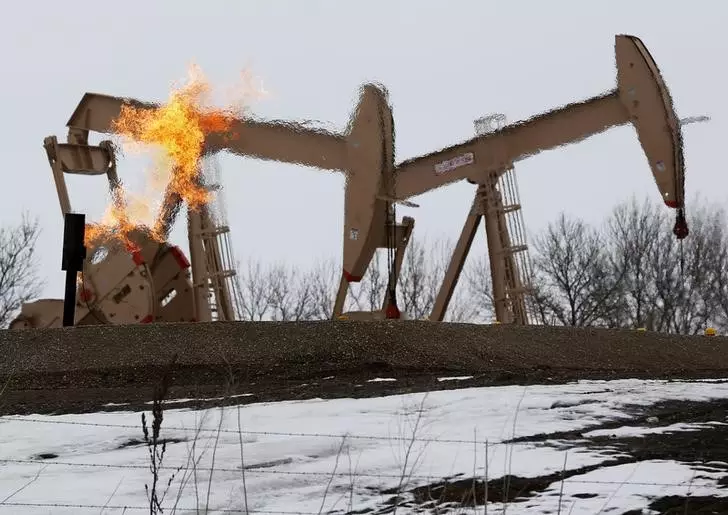In the latest report from Baker Hughes, a leader in energy services, the trend of declining oil and natural gas rigs in the United States has shown alarming continuity, as companies have slashed their operations for the third consecutive week. The weekly rig count, a vital barometer of future energy production, fell to 576 as of January 24—a marked decline from previous months and the lowest point witnessed since December 2021. This downturn is indicative of deeper market challenges affecting the energy sector, particularly amidst fluctuating oil prices and changing demand patterns.
Analyzing the data further reveals a significant retreat in the overall rig count, down 45 rigs or approximately 7% compared to the same period last year. This year-on-year reduction underscores a broader trend of caution among energy companies as they navigate an unpredictable economic landscape. With oil prices facing volatility, it appears that many firms are opting to curtail operations rather than expand, reflecting a strategic shift in focus towards sustainability and long-term profitability over short-term gains.
Delving into the specifics, the report highlighted that the count of oil rigs experienced a considerable drop, decreasing by six to a total of 472. This downturn not only signals reduced exploration but also aligns with the broader industry sentiment that has been grappling with production inflation and regulatory pressures. The oil rig count has now reached its lowest mark since December 2021, suggesting a worrying trend for crude oil production in the U.S.
Conversely, natural gas rigs saw a slight uptick, increasing by one to 99. While this might indicate slight stabilization in the gas sector, it is overshadowed by the significant losses in oil rig operations. This dichotomy poses questions about the future trajectory of energy production, especially as the U.S. works to balance its energy portfolio in the face of climate change aspirations and advancing renewable energy technologies.
The Permian Basin, recognized as the heart of U.S. oil production, has not been immune to these shifts. The rig count in this region plummeted by six to a total of 298, marking the lowest level since February 2022. This substantial decline is particularly concerning given that the Permian Basin is often regarded as a beacon of U.S. energy independence. The six-rig reduction also represents the most significant weekly drop since August 2023, highlighting the urgent need for the industry to address operational and market challenges.
The ongoing decreases in the number of operating rigs reveal significant shifts in the U.S. energy landscape. As companies adapt to both economic pressures and a changing regulatory environment, the future of oil and natural gas exploration remains uncertain. Stakeholders must not only respond to current market dynamics but also anticipate how technological advancements and environmental concerns will shape the sector in upcoming years. The adaptability of energy companies will be vital in navigating this turbulent period while striving to maintain profitability and sustainability.

